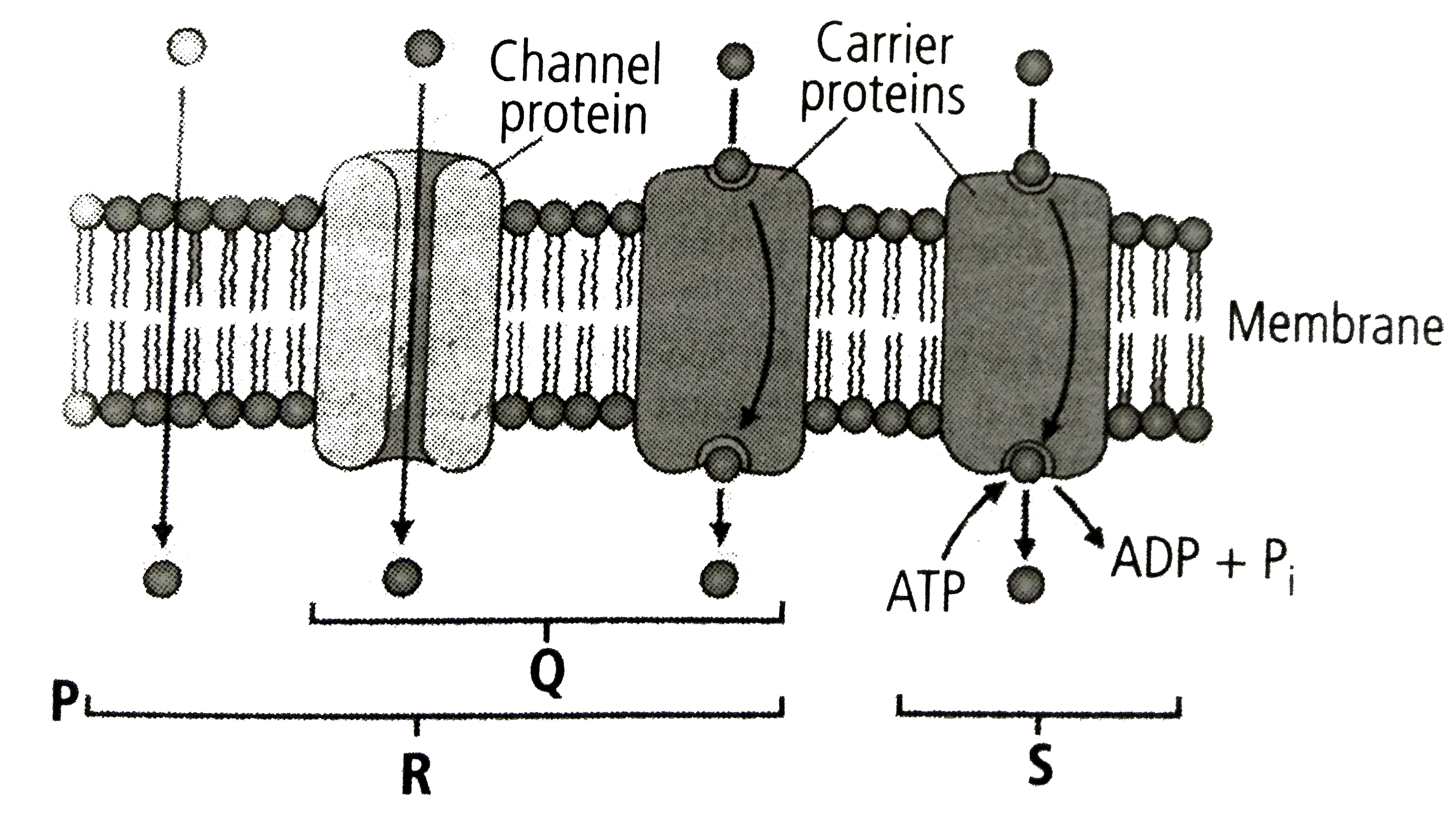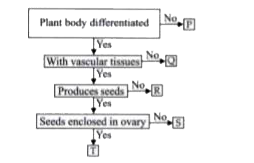Read the given information and identify P, Q, R and S.
P: Has definite shape and volume
Q: Undergoes sublimation
R: Has definite volume but no definite shape
S: Does not have definite shape and definite volume S
PQRSRubber ballCamphorAirMilk
PQRSGlass bowlCommon saltHoneyOxygen
PQRSBrickNaphthaleneMilkAir
PQRSAirSugarHoneyMilk
The correct Answer is:C
To solve the problem, we need to identify the substances P, Q, R, and S based on the descriptions provided:
1. P: Has definite shape and volume
- This characteristic is typical of solids. Solids have a fixed shape and a fixed volume.
- Conclusion: P is a solid.
2. Q: Undergoes sublimation
- Sublimation is the process where a solid changes directly into a gas without passing through the liquid state. A common example of a substance that undergoes sublimation is naphthalene (found in mothballs).
- Conclusion: Q is naphthalene.
3. R: Has definite volume but no definite shape
- This characteristic is typical of liquids. Liquids have a fixed volume but take the shape of their container.
- Conclusion: R is a liquid, such as milk or honey.
4. S: Does not have definite shape and definite volume
- This characteristic is typical of gases. Gases do not have a fixed shape or volume; they expand to fill their container.
- Conclusion: S is air (gas).
Now, summarizing our findings:
- P is a solid (e.g., brick).
- Q is naphthalene (which undergoes sublimation).
- R is a liquid (e.g., milk).
- S is air (gas).
Final Identification:
- P: Solid (e.g., brick)
- Q: Naphthalene (undergoes sublimation)
- R: Liquid (e.g., milk)
- S: Air (gas)
- This characteristic is typical of solids. Solids have a fixed shape and a fixed volume.
- Conclusion: P is a solid.
- Sublimation is the process where a solid changes directly into a gas without passing through the liquid state. A common example of a substance that undergoes sublimation is naphthalene (found in mothballs).
- Conclusion: Q is naphthalene.
- This characteristic is typical of liquids. Liquids have a fixed volume but take the shape of their container.
- Conclusion: R is a liquid, such as milk or honey.
- This characteristic is typical of gases. Gases do not have a fixed shape or volume; they expand to fill their container.
- Conclusion: S is air (gas).
- P is a solid (e.g., brick).
- Q is naphthalene (which undergoes sublimation).
- R is a liquid (e.g., milk).
- S is air (gas).
- P: Solid (e.g., brick)
- Q: Naphthalene (undergoes sublimation)
- R: Liquid (e.g., milk)
- S: Air (gas)
Topper's Solved these Questions
- NSO QUESTION PAPER 2020-21 SET ABOOK - SCIENCE OLYMPIAD FOUNDATION CHAPTER - NSO QUESTION PAPER 2020-21 SET AEXERCISE - ACHIEVERS SECTION
1 Video
- NSO QUESTION PAPER 2019-20 SET ABOOK - SCIENCE OLYMPIAD FOUNDATION CHAPTER - NSO QUESTION PAPER 2019-20 SET AEXERCISE - ACHIEVERS SECTION
1 Video
- SOF NATIONAL SCIENCE OLYMPIAD 2020 PAPER BOOK - SCIENCE OLYMPIAD FOUNDATION CHAPTER - SOF NATIONAL SCIENCE OLYMPIAD 2020 PAPER EXERCISE - ACHIEVERS SECTION
1 Video
Similar Questions
Knowledge Check
Refer to the given figure and identify P,Q,R and S.
 APQRSFacilitateddiffusionSimplediffusionActivetransportPassivetransportBPQRSSimplediffusionFacilitateddiffusionPassivetransportActivetransportCPQRSSimplediffusionFacilitateddiffusionActivetransportPassivetransportDPQRSFacilitateddiffusionSimplediffusionPassivetransportActivetransport
APQRSFacilitateddiffusionSimplediffusionActivetransportPassivetransportBPQRSSimplediffusionFacilitateddiffusionPassivetransportActivetransportCPQRSSimplediffusionFacilitateddiffusionActivetransportPassivetransportDPQRSFacilitateddiffusionSimplediffusionPassivetransportActivetransportFor the given redox reaction :

Identify p, q, r and s.Ap-5, q-10, r-oxidation, s-reductionBp-8, q-4, r-reduction, s-oxidationCp-6, q-3, r-oxidation, s-reductionDp-10, q-5, r-reduction, s-oxidationWhich of the following do not have a definite shape
AParameciumBEuglenaCTrypnosomaDAmoeba


